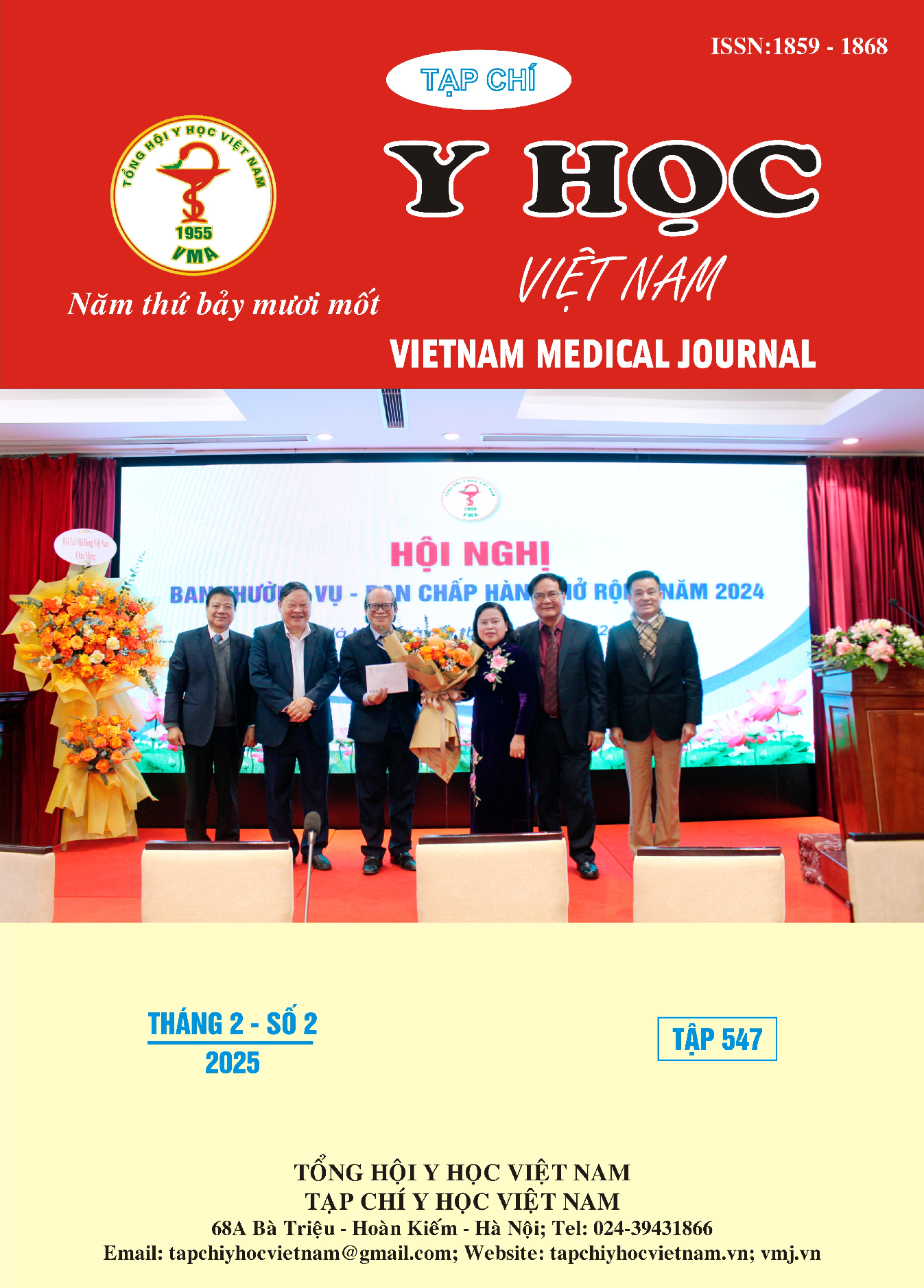EVALUATION OF THE CURRENT STATUS OF KNOWLEDGE, ATTITUDES AND BEHAVIORS ABOUT AMBLYOPIA CAUSED BY REFRACTIVE ERRORS OF PARENTS HAVING CHILDREN VISITING EXAMINATION AT THE VIETNAM NATIONAL EYE HOSPITAL IN 2024
Main Article Content
Abstract
Objective: To evaluate parents knowledge, attitudes, and behaviors of parents of children with amblyopia due to refractive errors. Method: Cross-sectional descriptive study. Results: A total of 280 parents of children with amblyopia due to refractive errors were interviewed, including 123 males (43.9%) and 157 females (56.1%). The age 25 - 56 years, with an average of 38.8 ± 4.0 years; 189 (67.5%) were under 40 years old. Educational levels were: ≤ high school 150 (53.6%), > high school 130 (46.4%). In terms of living area, 111 (39.6%) lived in urban areas and 169 (60.4%) in rural areas. About 39.3% of parents had poor knowledge about amblyopia, 44.6% had incorrect understanding, and 36.4% believed that pediatricians or family doctors could diagnose amblyopia due to refractive errors. Additionally, 28.6% of parents had poor attitudes, 48.6% were concerned that patching treatment would affect their child's psychology, and 63.6% were worried about the duration of treatment. Regarding behaviors, 45.5% of parents exhibited poor practices, with only 50% taking their children for eye check-ups at least once a year. There was a positive correlation between parents' knowledge, attitudes, and behaviors. Parents with good knowledge were 2.307 times more likely to have a good attitude compared to those with poor knowledge (OR=2.307, 95% CI 1.360-3.914), and those with good knowledge were 2.044 times more likely to exhibit good behavior (OR=2.044, 95% CI 1.089-3.837). Conclusion: 60.7% of parents had good knowledge about amblyopia due to refractive errors, 71.4% had a good attitude, and 55.0% had good behaviors. Parents with good knowledge were more likely to have positive attitudes and behaviors towards preventing amblyopia.
Article Details
Keywords
knowledge, attitude, behavior, parents of children, amblyopia, refractive errors.
References
2. Nguyễn, T. V., & Phan, C. L. G. (2023). Đánh giá thực trạng kiến thức, thái độ, hành vi của cha mẹ trẻ em có tật khúc xạ đến khám tại bệnh viện mắt trung ương năm 2022. Tạp Chí Y học Việt Nam, 530(2).
3. Abrahamsson, Maths and Sjöstrand, Johan (2003), "Astigmatic axis and amblyopia in childhood", Acta Ophthalmologica Scandinavica. 81(1), pp. 33-37.
4. Aldebasi, Yousef Homood (2015), "Prevalence of amblyopia in primary school children in Qassim province, Kingdom of Saudi Arabia", Middle East African journal of ophthalmology. 22(1), p. 86.
5. Alhaddab, Malak Mansour, Moukaddem, Afaf, and Albaqami, BD (2019), "Awareness, knowledge, and perception of amblyopia among parents attending pediatric and ophthalmology clinics at Kasch Riyadh", Int J Adv Res. 7, pp. 458-69.
6. Alsaqr, Ali M and Masmali, Ali M (2019), "The awareness of amblyopia among parents in Saudi Arabia", Therapeutic Advances in Ophthalmology. 11,
7. Alzahrani, Nujood, et al. (2018), "Awareness, perceptions and knowledge of amblyopia among pediatrics and ophthalmology clinics attendees in King AbdulAziz University Hospital, Jeddah", Int J of Adv Res. 6, pp. 1506-1517.
8. Basheikh, Ahmed, et al. (2021), "Knowledge and attitudes regarding amblyopia among parents in Jeddah, Saudi Arabia: a cross-sectional study", BMC Research Notes. 14, pp. 1-7.


